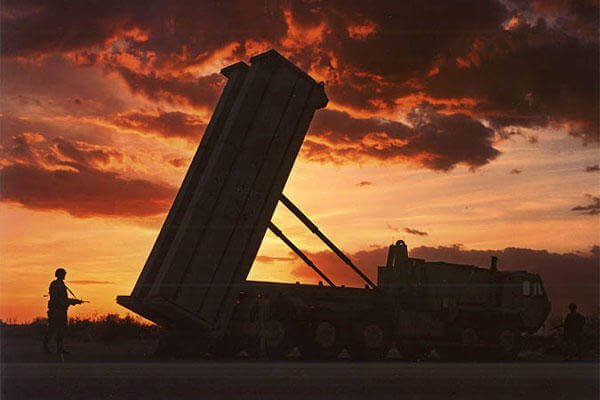The U.S. is set to deploy a ballistic missile defense system to Guam as part of a broader effort to increase its defense posture in following multiple threats and nuclear tests by North Korea, the Pentagon announced Wednesday.
"The Department of Defense has no higher responsibility than to ensure the protection of American citizens and forward deployed U.S. forces, said Cathy Wilkinson, a Pentagon spokeswoman. "This deployment is a prudent precautionary measure in response to North Korea's specific threat to target U.S. bases in the Pacific with its long- and intermediate-range ballistic missiles."
The Terminal High Altitude Area Defense ballistic missile defense system is a land-based missile defense system that includes a truck-mounted launcher, a complement of interceptor missiles, an AN/TPY-2 tracking radar, and an integrated fire control system, a Pentagon statement reads.
"This deployment will strengthen defense capabilities for American citizens in the U.S. Territory of Guam and U.S. forces stationed there," Wilkinson said in a statement.
THAAD functions as a terminal-phase defense system, meaning it is designed to intercept an incoming hostile threat during the final phase of its approach to a target.
"The reason for sending THAAD would be to protect Guam from an intermediate range ballistic missile. While this adds to deterrence, what we are trying to do is prevent North Korea from taking things too far," said Daniel Goure, vice president of the Lexington Institute, a Virginia-based think tank.
Therefore, although this deployment of THAAD to Guam would appear regionally oriented and not aimed at countering an Intercontinental Ballistic Missile (ICBM) threat from North Korea, the move takes place within the context of a broader threat equation regarding increased tensions with the North Korean regime.
Defense Secretary Chuck Hagel and the chairman of the Joint Chiefs of Staff Gen. Martin Dempsey told reporters March 28 that the U.S. military does not want to take any chances when it comes to defending the homeland against long-range missile threats from North Korea.
"We don't have any choice in defending this country but to anticipate worst-case scenarios. We do know the North Koreans have missile capability. We know that they have significant capability. And as we think through long-term threats, we have to plan, sure, for short term, but also for long term, and every decision that's made -- and the announcement that was made a couple of weeks ago wasn't some knee-jerk reaction to the young leader's threats in North Korea," Hagel told reporters at the Pentagon.
Dempsey also echoed this sentiment, specifically citing a threat from North Korea, telling reporters about Pentagon concerns regarding the proliferation of technologies.
The Pentagon recently announced that 14 more ground-based interceptors (GBI) will be added to the arsenal in Fort Greely, Alaska. The $1 billion effort, to be completed by 2017, will bring the total number of GBIs at Fort Greely and Vandenberg Air Force Base, Calif., from 30 up to 44.
Defense Secretary Hagel told reporters on March 15 when announcing this plan that North Korea had "used its Taepodong-2 missile to put a satellite into orbit, thus demonstrating progress in its development of long-range missile technology."
GBIs are designed to intercept an incoming ICBM during what's referred to as the midcourse phase of ballistic missile defense, specifying that roughly 20-minute period when an approaching missile flies through space after leaving the earth's atmosphere.
"GBIs are designed for the Midcourse phase. Midcourse is the longest period of time that the hostile warhead is in space," said Rick Lehner, spokesman for the Pentagon's Missile Defense Agency.





























